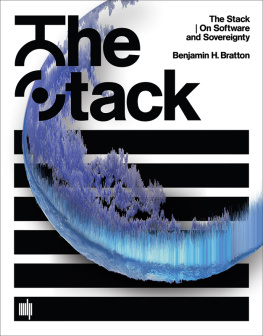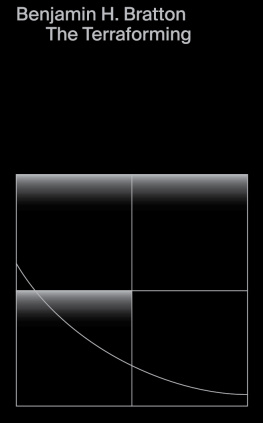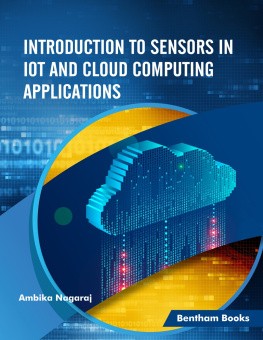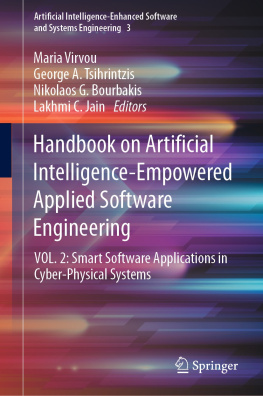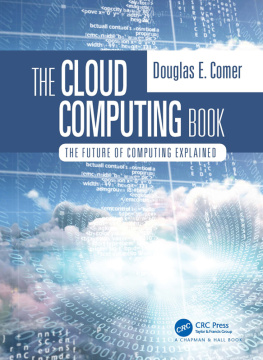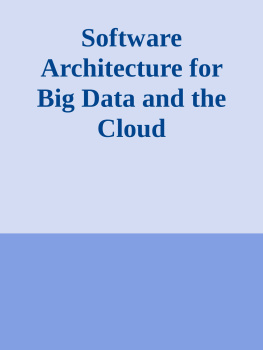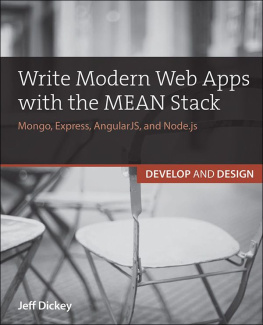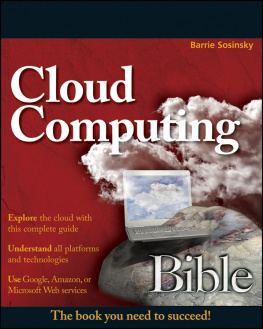Software Studies
Matthew Fuller, Lev Manovich, and Noah Wardrip-Fruin, editors
Expressive Processing: Digital Fictions, Computer Games, and Software Studies ,
Noah Wardrip-Fruin, 2009
Code/Space: Software and Everyday Life ,
Rob Kitchin and Martin Dodge, 2011
Programmed Visions: Software and Memory ,
Wendy Hui Kyong Chun, 2011
Speaking Code: Coding as Aesthetic and Political Expression ,
Geoff Cox and Alex McLean, 2012
10 PRINT CHR$(205.5+RND(1));: GOTO 10 ,
Nick Montfort, Patsy Baudoin, John Bell, Ian Bogost, Jeremy Douglass, Mark Marino, Michael Mateas, Casey Reas, Mark Sample, and Noah Vawter, 2012
The Imaginary App ,
Paul D. Miller and Svitlana Matviyenko, 2014
The Stack: On Software and Sovereignty ,
Benjamin H. Bratton, 2015
The Stack
On Software and Sovereignty
Benjamin H. Bratton
The MIT Press
Cambridge, Massachusetts
London, England
2015 Massachusetts Institute of Technology
All rights reserved. No part of this book may be reproduced in any form by any electronic or mechanical means (including photocopying, recording, or information storage and retrieval) without permission in writing from the publisher.
This book was set in ITC Stone Serif by Toppan Best-set Premedia Limited. Printed and bound in the United States of America.
Cover design by Metahaven.
Library of Congress Cataloging-in-Publication Data is available.
ISBN: 978-0-262-02957-5
eISBN: 978-0-262-33431-0 (retail e-book)
eISBN: 978-0-262-33017-6 (MIT e-book)
10987654321
For Lucien, and his world.
Table of Contents
Series Foreword
Software is deeply woven into contemporary lifeeconomically, culturally, creatively, politicallyin manners both obvious and nearly invisible. Yet while much is written about how software is used, and the activities that it supports and shapes, thinking about software itself has remained largely technical for much of its history. Increasingly, however, artists, scientists, engineers, hackers, designers, and scholars in the humanities and social sciences are finding that for the questions they face, and the things they need to build, an expanded understanding of software is necessary. For such understanding they can call upon a strand of texts in the history of computing and new media, they can take part in the rich implicit culture of software, and they also can take part in the development of an emerging, fundamentally transdisciplinary, computational literacy. These provide the foundation for software studies.
Software Studies uses and develops cultural, theoretical, and practice-oriented approaches to make critical, historical, and experimental accounts of (and interventions via) the objects and processes of software. The field engages and contributes to the research of computer scientists, the work of software designers and engineers, and the creations of software artists. It tracks how software is substantially integrated into the processes of contemporary culture and society, reformulating processes, ideas, institutions, and cultural objects around their closeness to algorithmic and formal description and action. Software studies proposes histories of computational cultures and works with the intellectual resources of computing to develop reflexive thinking about its entanglements and possibilities. It does this both in the scholarly modes of the humanities and social sciences and in the software creation/research modes of computer science, the arts, and design.
The Software Studies book series, published by the MIT Press, aims to publish the best new work in a critical and experimental field that is at once culturally and technically literate, reflecting the reality of today's software culture.
Acknowledgments
This book took shape over several years, and only due to the friendship, collegiality, and support of many people. Whether or not I knew it at the time, at different moments, each of them ensured that this project would reach fruition. For the conversation, critiques, and cajoling, I am in their debt. At some point, I would like to host them all at once for a grand dinner. An incomplete invitation list must include Lida Abdul, Alisa Andrasek, Julieta Aranda, Armen Avanessian, Carla Azar, Juan Azulay, David Bergman, Ryan Bishop, Mike Bonifer, Alexi Bourbeau, James Bridle, Sheldon Brown, Anne Burdick, Jose Caballer, Ben Cerveny, Karl Chu, Peter Cowhey, Jordan Crandall, Kate Crawford, Sean Crowe, Teddy Cruz, Rene Daalder, Marc Davis, Joe Day, Manuel de Landa, Jessica DElena, Neil Denari, Robert Densworth, Ricardo Dominguez, Tim Durfee, Keller Easterling, Greg Edwards, Adam Eeuwens, Joel Ericson, Simonetta Falasca-Zamponi, Numair Faraz, Conn Fishburn, Jane Fitzgerald, David Fore, Brady Forrest, Peter Frankfurt, Ming Fung, Vincent Gallo, Alexandra Daisy Ginsberg, Ken Goldberg, Eugene Goreshter, Marcelyn Gow, Adam Greenfield, John R. Hall, Serene Han, Usman Haque, Dick Hebdige, Oliver Hess, Bradley Horowitz, Georgina Huljich, Jeffrey Inaba, Xeni Jardin, Adriene Jenik, Daniel Jennett, Natalie Jeremijenko, Andrew Jones, Joshua Kauffman, Ed Keller, Cheryl Kellond, Jeff Kipnis, Wolf Kittler, Norman Klein, Peter Krapp, Vinca Kruk, Steve Kurzman, Sanford Kwinter, Sylvia Lavin, Rachel Law, Neil Leach, Carla Leiato, Elizabeth Losh, Sylvre Lotringer, Peter Lunenfeld, Greg Lynn, Geoff Manaugh, Miltos Manetas, Elena Manferdini, David Maymudes, Cynthia McCauley, Nandita Biswas Mellamphy, Rebeca Mendez, Andrew Mitchell, Christian Moeller, Phillipe Morel, Eric Owen Moss, Reza Negarastani, Leonard Nevarez, Robert Nideffer, Marcos Novak, Juilian Oliver, Lisa Parks, Jussi Parrika, Matteo Pasquenelli, Constance Penley, Rene Peralta, Paul Petrunia, Florencia Pita, Sascha Pohflepp, Dave Ragsdale, Ramesh Rao, Casey Reas, Kim Stanley Robinson, Irit Rogoff, Rory Rowan, Mohammed Salemy, Joachim Sauter, Axel Schmitzberger, Patrik Schumacher, Tien-Ann Shih, Benedict Singleton, Kevin Slavin, Michael Speaks, Marcelo Spina, Jay Springett, Nick Srnicek, Brett Stalbaum, Molly Wright Steenson, Bruce Sterling, Gabie Strong, Lin Su Nalepa, Tiziana Terranova, Skylar Tibbetts, Elizabeth Timme, Bruce Tizes, Daniel van der Velden, Kazys Varmelis, Victoria Vesna, Joseph Wang, McKenzie Wark, John Welchman, John Wilbanks, Alex Williams, Tom Wiscombe, Nick Whitford-Dyer, Ben Woodard, Katharine Wright, Liam Young, Adam Zaretsky, and Peter Zellner. Special thanks are due to Roger O. Friedland whose extraordinary support during the most formative period of research made it possible to realize this project. The decade that I spent teaching at the Southern California Institute of Architecture (SCI-Arc) would not have been possible without the support and friendship of Hernan Diaz-Alonso. Moving from Los Angeles to La Jolla at the University of California, San Diego Department of Visual Arts and Calit2 was made possible by Lev Manovich and Larry Smarr. I am in debt to all those I have named and to these four in particular. While teaching at UCSD, the European Graduate School, and SCI-Arc (as well as at UCLA's Department of Design|Media Arts and Art Center College of Design's Media Design Practices graduate program), I had the privilege of working with several incredibly talented artists, writers, and designers, many of whom I first met as their teacher and then later again as their student. There are too many to list, but I especially thank Eli Altman, Adam Bandler, Simon Battisti, Ian Besler, Zach Blas, Sean Dockrey, Jeremy Douglas, Seth Ferris, Willea Ferris, Moira Henry, Richard Hollington, William Huber, Jordan Kanter, Miles Kemp, Aaron Koblin, Sam Kronick (who talked me through some of the key structural ideas of the book as they were forming), Alejandra Lillo, Benjamin Lotan, Nicholas Pesca, Drura Parrish, Daniel Rehn, Jessica Rivera, F. Myles Sciotto, Necole Tang, Josh Taron, Kyle Thomspon, Tricia Wang, Angela Washko, Emily White, and many others. I also thank Doug Sery at MIT Press for his patience and encouragement in the metamorphosis of this book from idea to object. Thanks also to Lawrence Chit and Pratik Pramanik for assistance with preparing the final manuscript. Most of all, I thank my family, and its odd diagram: Bruce, Janet, Dee, Michael, Marci, Jamie, Cindy, Karen, Dave, Edie, Marion, Ed, Bill, Ethel, and Bruna and Lucien.
Next page
